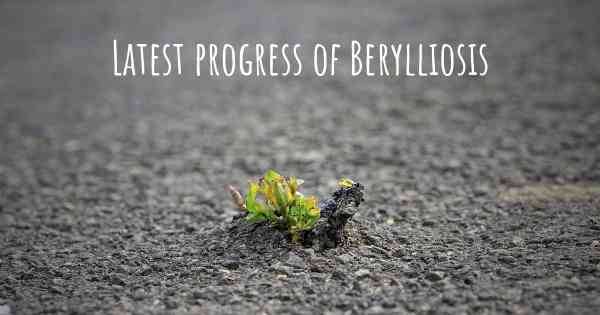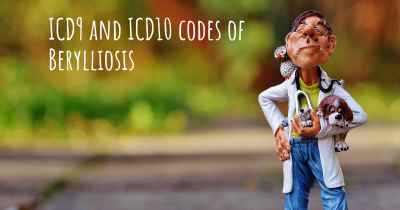What are the latest advances in Berylliosis?
Here you can see the latest advances and discoveries made regarding Berylliosis.

Berylliosis is a rare and chronic lung disease caused by exposure to beryllium, a lightweight metal commonly used in various industries. Over the years, significant advancements have been made in understanding and managing this condition. These advances have focused on various aspects, including diagnosis, treatment, and prevention.
Diagnosis
Early and accurate diagnosis of berylliosis is crucial for effective management. In recent years, there have been notable developments in diagnostic techniques:
- Beryllium lymphocyte proliferation test (BeLPT): This blood test measures the immune response to beryllium and is considered the gold standard for diagnosing berylliosis. It has become more sensitive and specific, aiding in early detection.
- High-resolution computed tomography (HRCT): HRCT scans provide detailed images of the lungs, allowing for the identification of characteristic abnormalities associated with berylliosis. This imaging technique has improved the accuracy of diagnosis.
Treatment
Managing symptoms and preventing disease progression are the primary goals of berylliosis treatment. Recent advances have expanded treatment options:
- Corticosteroids: These anti-inflammatory medications have long been the mainstay of berylliosis treatment. However, new research has focused on optimizing dosage and duration to minimize side effects while maintaining efficacy.
- Immunosuppressive agents: In cases where corticosteroids alone are insufficient, immunosuppressive drugs may be prescribed. These medications help modulate the immune response and reduce lung inflammation.
- Biological therapies: Emerging therapies targeting specific molecules involved in the immune response are being investigated. These therapies aim to provide more targeted and effective treatment options with fewer side effects.
Prevention
Preventing berylliosis through exposure control is of utmost importance. Recent advances have focused on improving workplace safety and reducing the risk of beryllium exposure:
- Occupational safety guidelines: Regulatory bodies and organizations have developed stricter guidelines to limit beryllium exposure in various industries. These guidelines include improved ventilation systems, personal protective equipment, and regular monitoring of airborne beryllium levels.
- Substitution and engineering controls: Efforts are being made to replace beryllium with less hazardous materials in certain applications. Additionally, engineering controls such as enclosed systems and automated processes help minimize worker exposure.
- Education and awareness: Increasing awareness among workers and employers about the risks of beryllium exposure is crucial. Training programs and educational campaigns emphasize the importance of proper handling, personal hygiene, and regular health check-ups.
Research and Future Directions
Continued research in berylliosis is essential for further advancements. Areas of ongoing investigation include:
- Genetic susceptibility: Researchers are studying genetic factors that may influence an individual's susceptibility to berylliosis. Understanding these genetic markers could help identify at-risk individuals and develop personalized prevention strategies.
- Biomarkers: The search for reliable biomarkers to aid in early diagnosis and disease monitoring is ongoing. Biomarkers could provide valuable insights into disease progression and treatment response.
- Novel therapies: Scientists are exploring novel therapeutic approaches, such as targeted immunomodulation and gene therapies, to improve treatment outcomes and minimize side effects.
In conclusion, significant progress has been made in various aspects of berylliosis, including diagnosis, treatment, and prevention. These advancements have led to improved diagnostic techniques, expanded treatment options, enhanced workplace safety measures, and ongoing research for future breakthroughs. With continued efforts, it is hoped that berylliosis management will further improve, ultimately benefiting individuals affected by this challenging lung disease.








